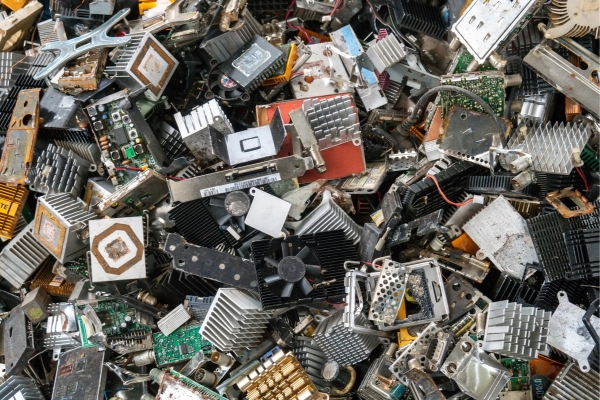The Escalating E-Waste Crisis
Electronic Recycling is not just a buzzword—it’s a critical component of our global effort to combat the mounting challenges posed by electronic waste. As technology continues to evolve at a rapid pace, the turnover of electronic devices has surged, leading to an unprecedented accumulation of discarded gadgets. Understanding the importance of electronic recycling is essential for both environmental sustainability and resource conservation.
In 2025, the world is grappling with an e-waste crisis of monumental proportions. Estimates indicate that over 347 million metric tons of electronic waste remain unrecycled globally, with only a fraction being properly collected and processed. This disparity underscores the urgent need for effective electronic recycling initiatives.
Electronic devices, from smartphones to refrigerators, contain hazardous materials like mercury, lead, and cadmium. When improperly disposed of, these substances can leach into soil and water, posing significant health risks to humans and wildlife. Moreover, the informal recycling sector, prevalent in many developing countries, often lacks the necessary safety protocols, exposing workers to toxic elements.
The Environmental and Economic Imperatives
Electronic recycling serves a dual purpose: protecting the environment and conserving valuable resources. By recycling electronics, we reduce the need for raw material extraction, thereby minimizing environmental degradation. For instance, recycling one million laptops saves enough energy to power thousands of homes for a year.
From an economic standpoint, electronic recycling is a burgeoning industry. The global e-waste management market is projected to grow substantially, reflecting a strong demand for sustainable tech practices. This growth is driven by increasing awareness, regulatory pressures, and the intrinsic value of recyclable materials like gold, silver, and copper found in electronic devices.
Technological Advancements in Recycling
The landscape of electronic recycling is being transformed by technological innovations. Artificial intelligence and automation are enhancing the efficiency of sorting and processing e-waste, enabling the identification and extraction of valuable components with greater precision. These advancements not only improve recovery rates but also reduce the environmental impact of recycling operations.
Moreover, the concept of urban mining—extracting precious metals from electronic waste—is gaining traction. This approach offers a sustainable alternative to traditional mining, reducing the ecological footprint associated with resource extraction.
Responsible Recycling Practices
Engaging in responsible electronic recycling involves several key practices:
- Data Security: Before recycling, ensure all personal data is securely erased from devices to protect privacy.
- Certified Recyclers: Utilize certified recycling facilities that adhere to environmental and safety standards.
- Manufacturer Take-Back Programs: Many electronics manufacturers offer take-back programs, facilitating the proper disposal and recycling of old devices.
- Community Collection Events: Participate in local e-waste collection events, which provide convenient avenues for disposing of electronic waste responsibly.
The Role of Policy and Regulation
Government policies play a pivotal role in promoting electronic recycling. Extended Producer Responsibility (EPR) mandates hold manufacturers accountable for the end-of-life management of their products, incentivizing the design of more sustainable and recyclable electronics.
Additionally, international agreements regulate the transboundary movements of hazardous waste, including e-waste, aiming to prevent the dumping of electronic waste in countries lacking adequate recycling infrastructure.
Community Engagement and Education
Raising public awareness about the importance of electronic recycling is crucial. Educational campaigns can inform consumers about the environmental and health impacts of improper e-waste disposal and the benefits of recycling. By fostering a culture of sustainability, communities can collectively contribute to mitigating the e-waste crisis.
Conclusion
Electronic recycling is an indispensable component of sustainable development in our increasingly digital world. By embracing responsible recycling practices, supporting technological innovations, and advocating for robust policies, we can address the challenges posed by electronic waste. Collective action from individuals, industries, and governments is essential to ensure a healthier planet for future generations.







